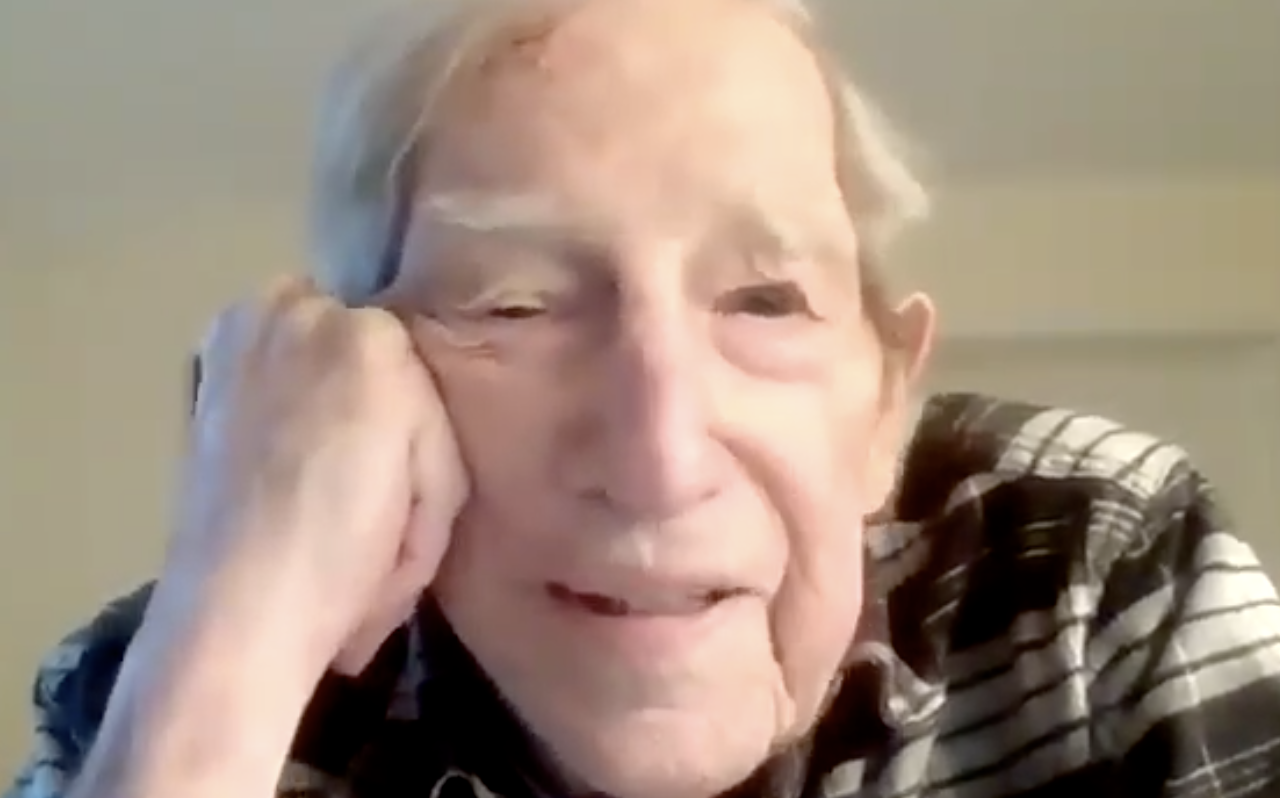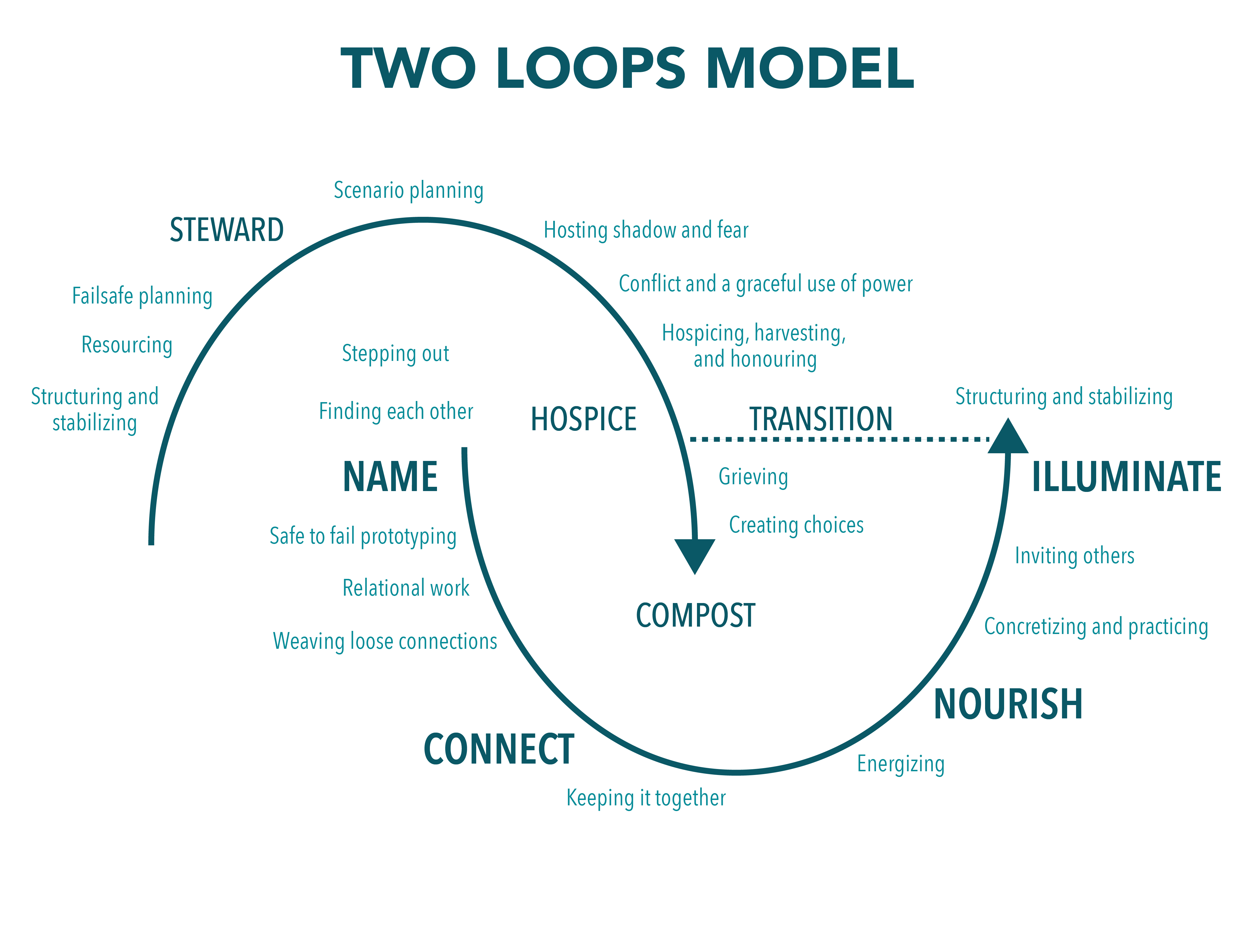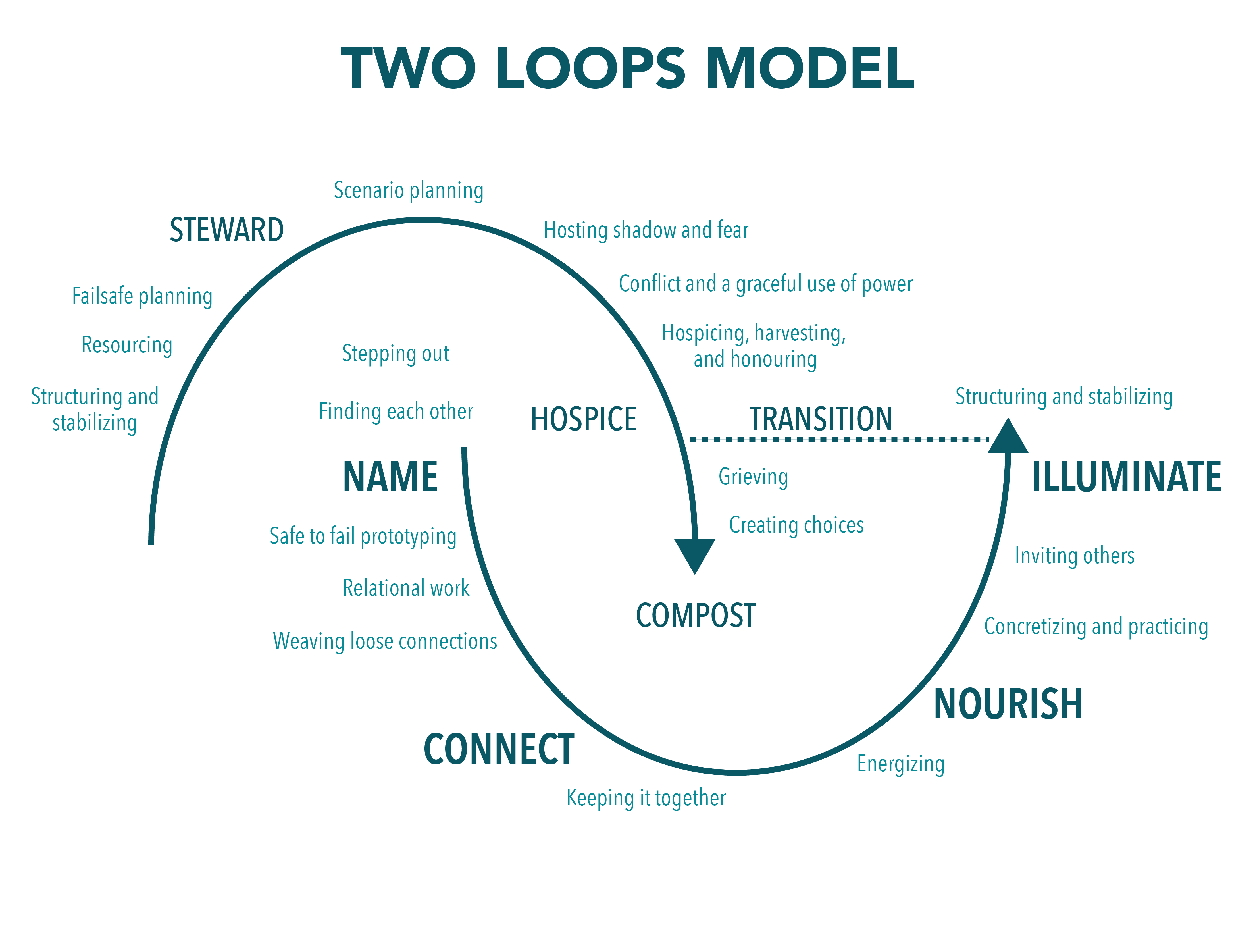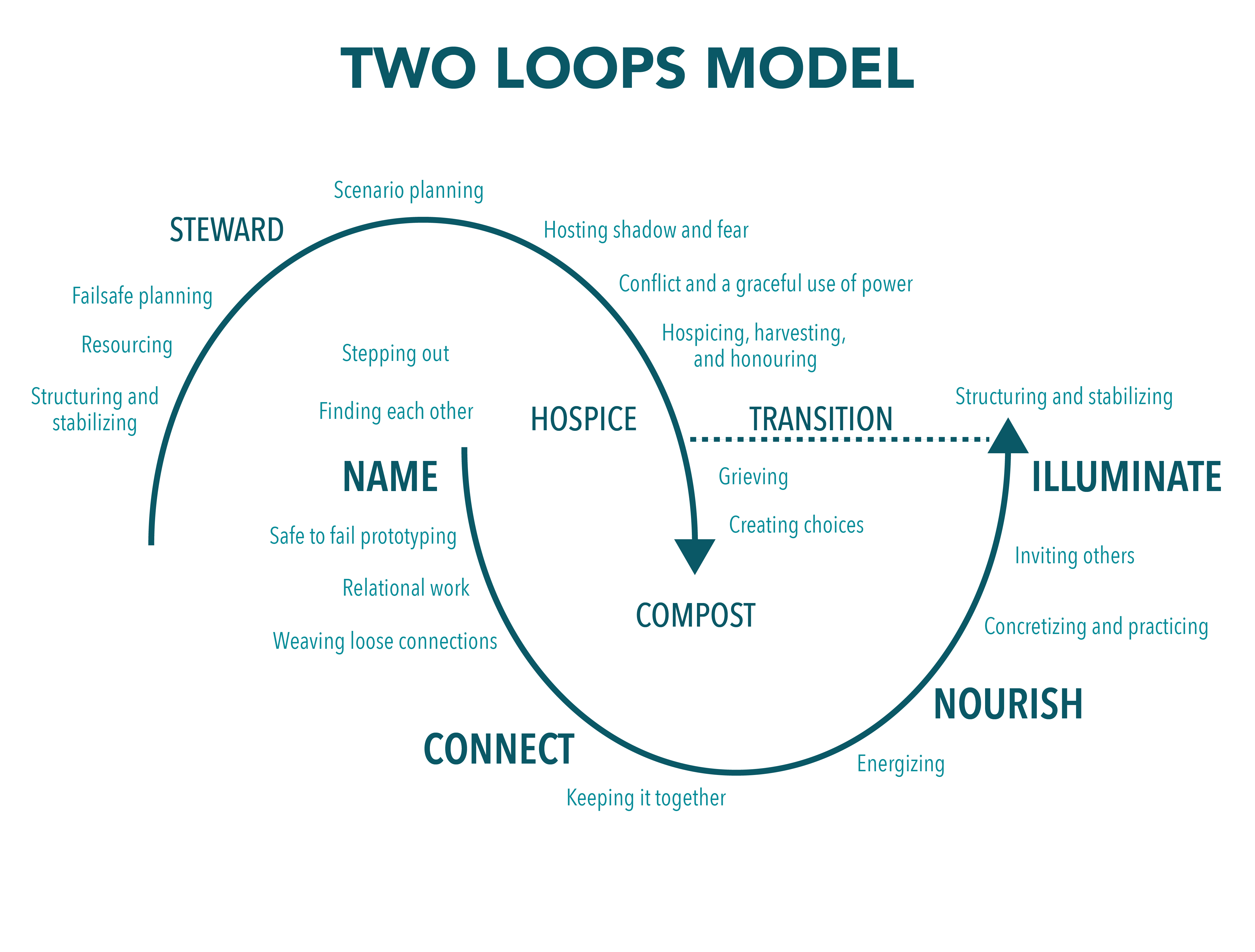
In this video, Harrison Owen discusses the chaos that is disrupting the order we take for granted and begins to create a new order and a different world. Harrison has been saying much the same thing for his entire career, starting with his dissertation on Aramaic and associated mythologies and cosmologies. He has been a long-time student of the dance of chaos and order, and his development of Open Space Technology came from this lifelong inquiry. i encountered Open Space first through an event that was hosted by Anne Stadler and Angeles Arien in 1995, and I met Harrison for …

Part 1: Introduction to the model Part 2: A deeper dive into the model The two loops model emerged from many years of conversations amongst people working in the Berkana Exchange and their friends and mates in the late 1990s and early 2000s. As my friend Tim Merry pointed out on a comment at LinkedIn, the model itself was an emergent framework of how organizing happens on what we called back then “trans local” communities of practice. The Berkana Exchange was made up of many learning hubs around the world in places like Zimbabwe, South Africa, Senegal, India, Brazil, Mexico …

Part 1 is an introduction to this model. In the first post on this model, I introduced the basic model. In this one, I want to explain the way I think about the lines and the spaces between them The big moves The “two loops” referred to in the model’s name refer to these two arcs that essentially represent the rise and fall of influence over time. In the original, as I encountered it, only the bottom arc had labels for four big movements of an emerging system. They were the original Name, Connect, Nourish and Illuminate, based on the …

It occured to me this morning after I posted that piece on affordances last night, I haven’t really blogged about the two loops model of change in living systems. That’s kind of a surprise to me because for the past 15 years or so this is one of the models that has formed a deep part of my practice in working with organizations. Like the Chaordic Path, it is a simple way to grasp deep and complex topics and a good way to introduce groups to concepts that explain more deeply how complex systems work. (You’ll see me refer to …

A quick note here to connect a key idea from complexity work with the two loops model of change that I’ve used essentially as a theory of change in living systems ever since I started working with it back in the Berkana Institute days when we were looking for ways to explain why networks alone weren’t the answer to change work. Just a warning. This is a theory-heavy post, and I recommend you read the linked papers and blogs to dove deeper. What is unique about the model pictured above (and click through if you’re reading this on email, as …

